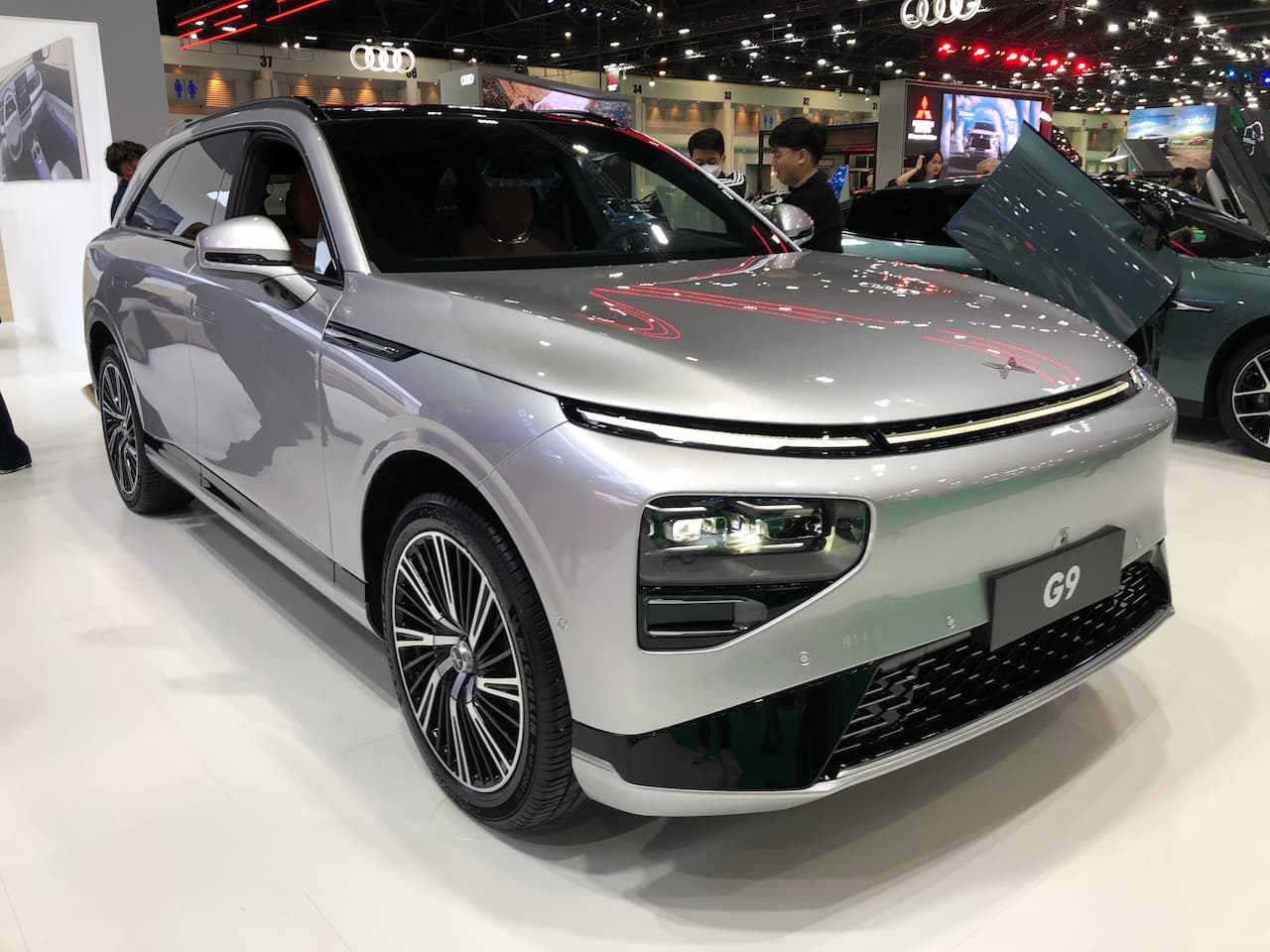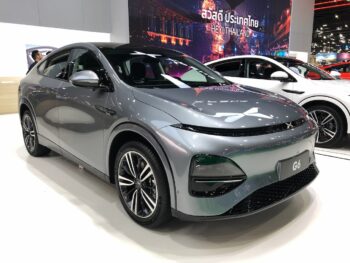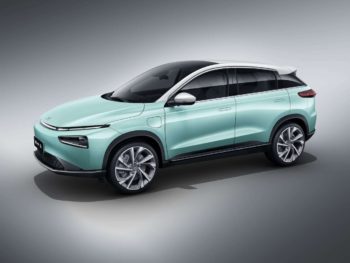The Xpeng G9, the brand’s fourth production model, is not just any Chinese SUV. For one, it is one of the world’s fastest-charging EVs. Many other innovations in the new flagship Xpeng are helping it become a game-changer at home and globally. When I visited the 2024 Bangkok International Motor Show in March, I had a chance to explore the Xpeng G9’s design, comfort, interior and features in detail. Here’s what I think about the five-seat SUV:
Design
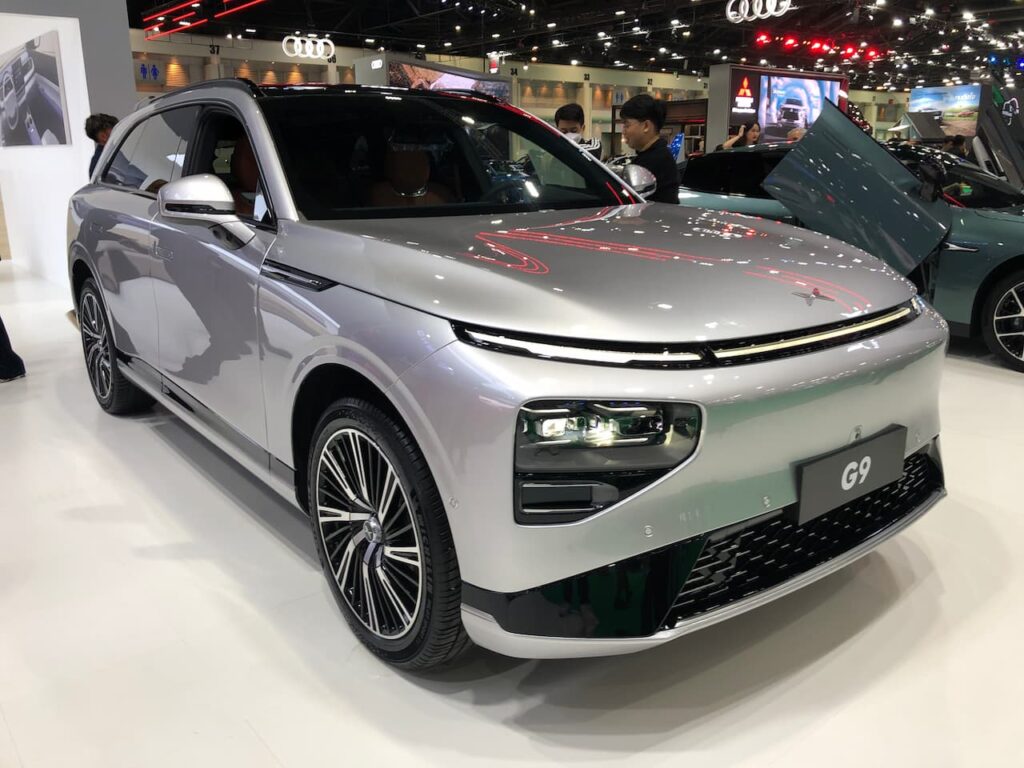
The G9 is positioned in the medium- to large-sized smart electric SUV market. It is unmistakably an SUV counterpart of the Xpeng P7 sedan. At the front, it features the signature full-width DRL strip on the top, separate headlights, which integrate two LiDAR sensors, a smooth mask in place of a traditional radiator grille, a mesh-pattern lower air intake, and an elegantly designed bonnet.
From the sides, the G9 has a sleek greenhouse, neatly designed door panels with smooth surfacing, and flush-fit handles. My favorite feature of the exterior is the bow-like shape of the glasshouse, which reminds me of the Lucid Gravity. At the rear, the G9 again mimics the looks of the P7, with a full-width tail lamp and block-lettered ‘XPENG’ branding. However, I’ve noticed that the tail lamp looks bigger on the SUV.
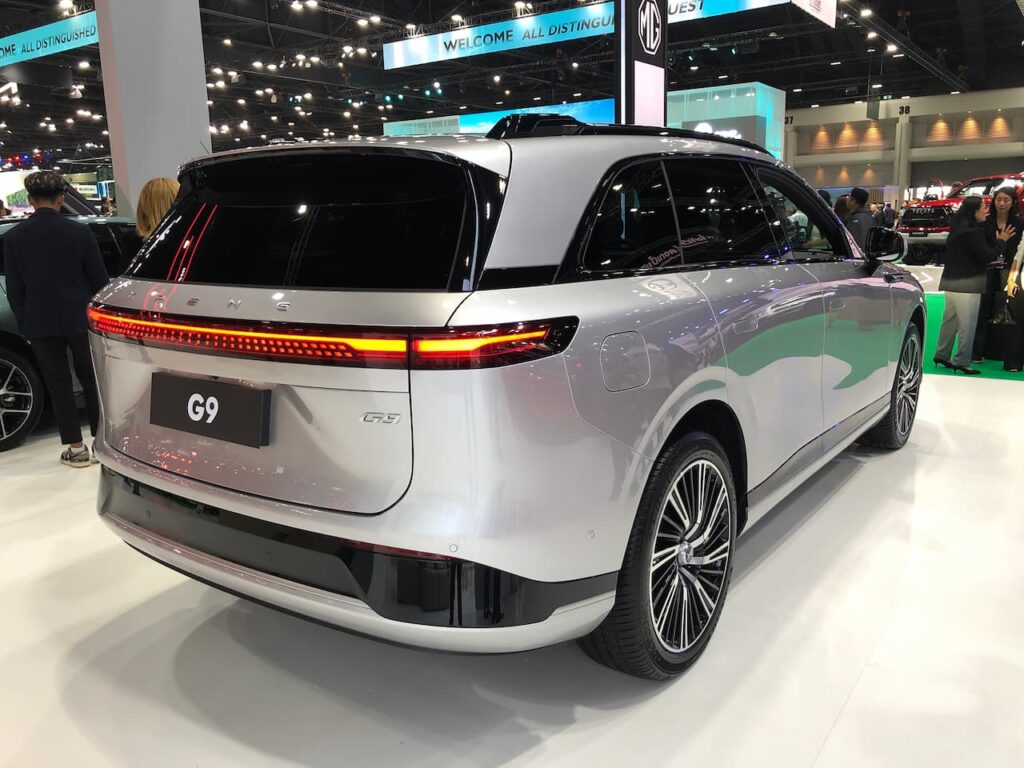
The Xpeng G9 seemed to have a solid build and looked upmarket due to its premium design. I noticed that like on mainstream cars priced at a budget, the flush-fitted door handles on the Xpeng G9 softly retracted upon release. I observed some panel misalignment, though. For example, the gap between the front door and the hood in the top portion didn’t seem consistent on both sides. On the left side, the gap between the belt line on the rear door and the rear quarter panel could be tighter in future iterations.
Interior
The Xpeng G9 has a premium interior with a lot of digital real estate, which is nothing out of the ordinary considering the trend in the Chinese EV space. The five-seat SUV sports three free-standing displays on the dashboard: a 10.25-inch digital instrument cluster that’s tucked in to reduce sun glare, and the other two clubbed to look like a single 14.96-inch display. The left-side unit is the infotainment display, while the right-side unit is a secondary, 14.96-inch passenger display, which is a trending feature in luxury models.

The dashboard is sleek and has a wraparound design, which increases the sense of spaciousness. I like how a curved, bridge-type center console swiftly connects to this dashboard. It integrates a slim and wide AC vent and two cup holders and has two smartphone chargers as well. The flat-bottomed, two-spoke steering wheel goes well with the minimalist theme.
From my experience at the 2024 Bangkok International Motor Show, I can say the infotainment system has slick software, although I wouldn’t say it looks designed for European or American customers. The few buttons that were present in the cabin provided tactile feedback. Soft-touch materials were omnipresent in the cabin.
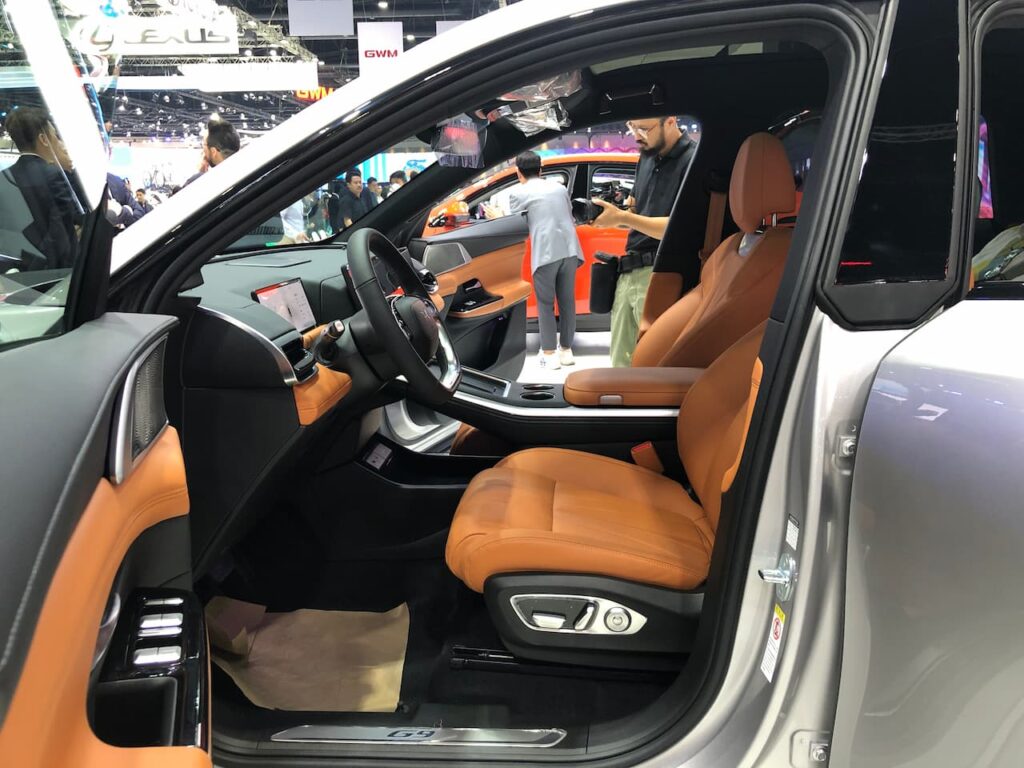
The center console offered good storage space with an open area to keep a grocery bag or an Apple iPad, a USB Type-C port, a USB Type-A port, a 180-watt power outlet, two cupholders, a dual wireless charging pad, and a moderately long and somewhat deep box.
I’m a 5’7” tall person, and I faced no issue entering or exiting the Xpeng G9. The cabin was quiet and did a good job of eliminating ambient noise. I first sat in the driver’s seat and found headroom in abundance. The under-thigh support and lumbar support were also great. A massage function was available, and I found it quite effective. Outside visibility was good from all angles. The driver’s seat automatically slid back to make egress easy.
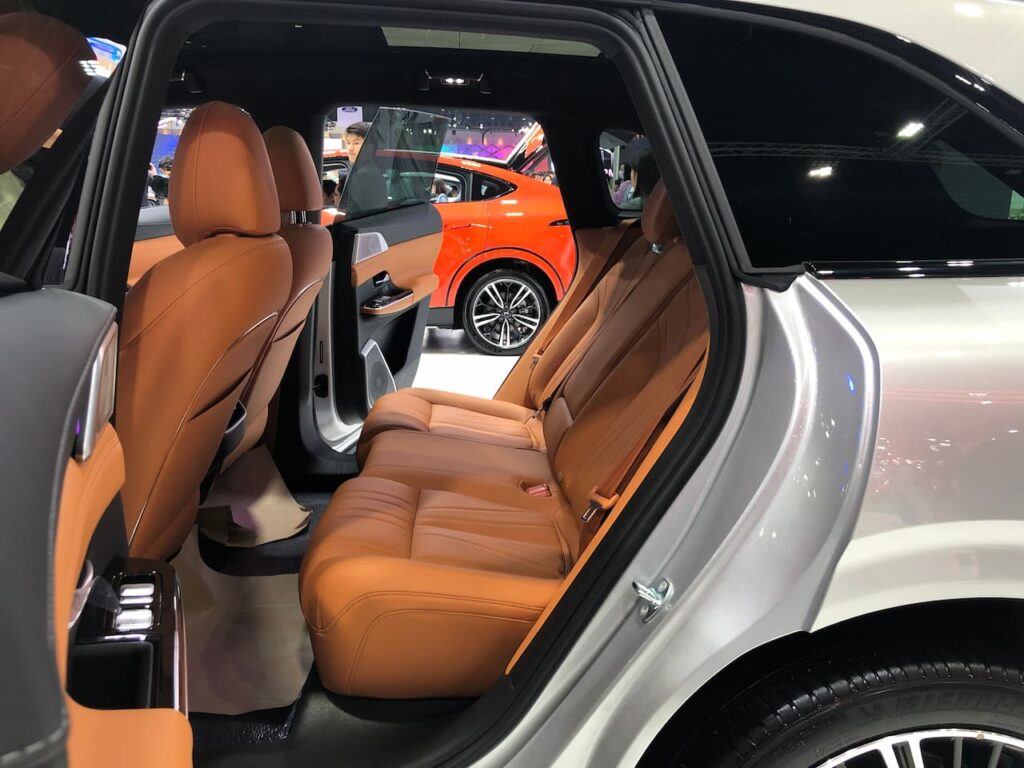
Ingress and egress were easy for me in the rear, too. I had plenty of legroom and knee room behind the driver’s seat. I found the angle of the backrest comfortable, and a recline function allowed me to make it more relaxing. The lumbar support was good, and I didn’t notice a lack of under-thigh support either. I had approximately seven inches of headroom here.
I was comfortable in the center position of the bench as well, as the backrest was pretty wide in that position and there was only a small hump in the floor there. I had about six and a half inches of headroom there.
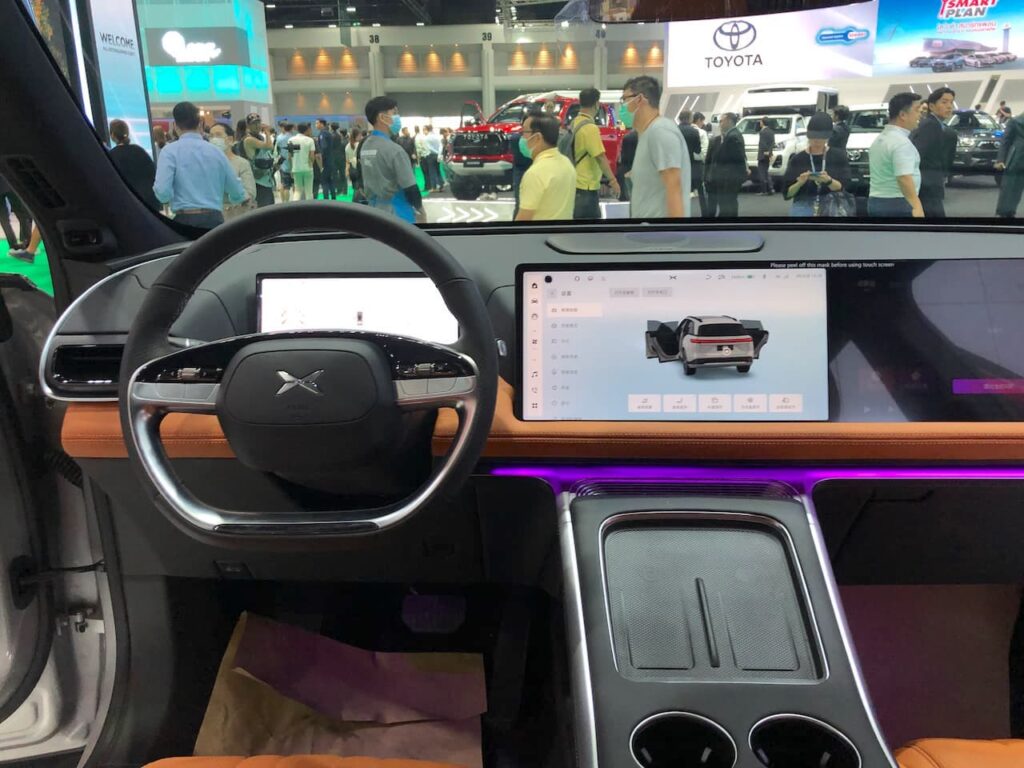
The G9 is China’s first model implementing a Gigabit Ethernet communications architecture. In the coming months, it will become the company’s first model with XPilot 4.0, which will enable full-scenario-assisted driving from vehicle start-up to parking. Thanks to the Gigabit Ethernet communications architecture, a firmware OTA upgrade will take as little as just half an hour.
Built on a new-generation hardware platform, XPilot 4.0 has a significantly higher perception capability and deliver full-scenario driver assistance.
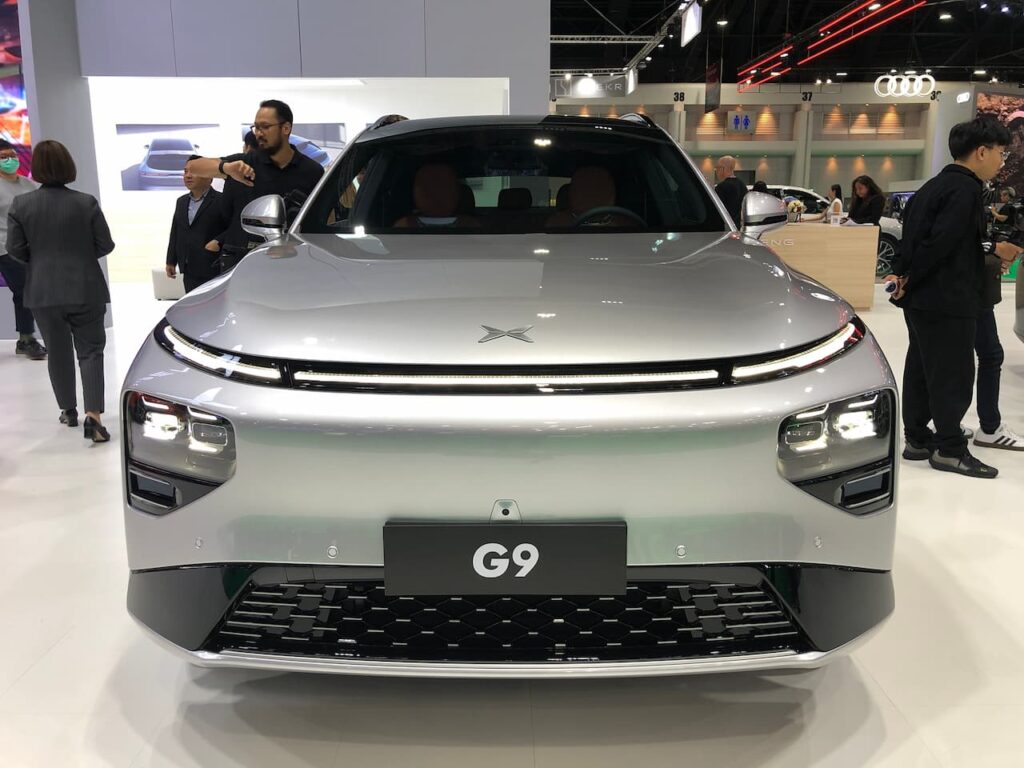
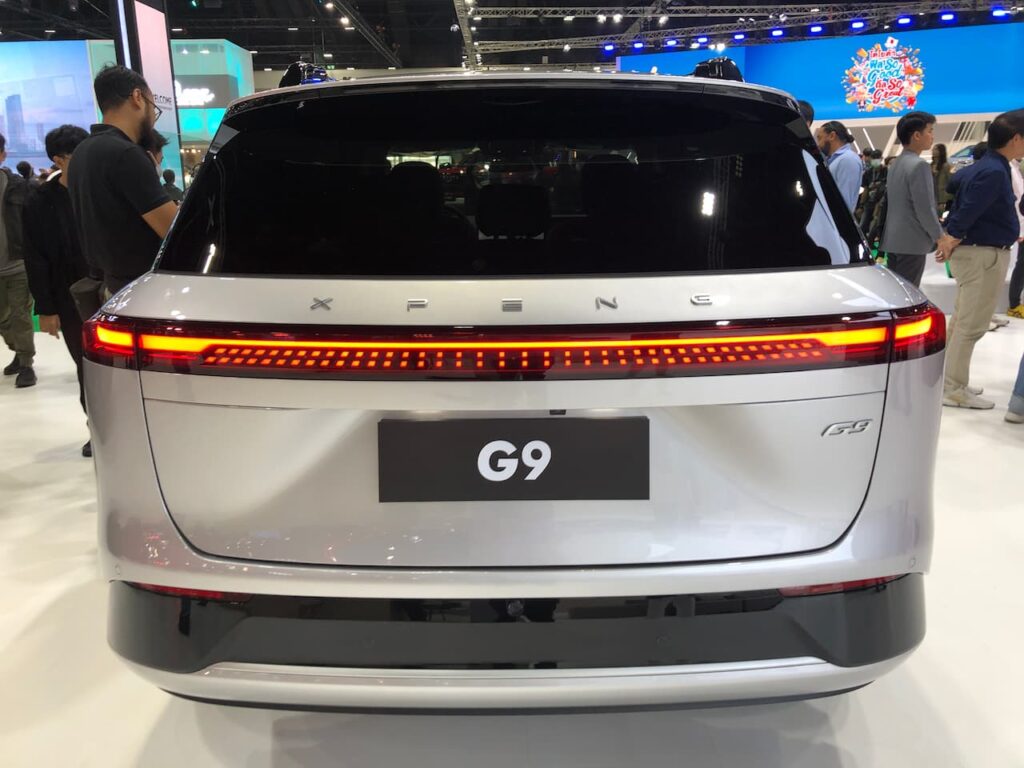
The fourth version of Xpeng Motor’s driving assistance system will have 508 TOPS ECU computing power. Two NVIDIA Drive Orin autonomous driving SoCs, an 8 million-pixel front-view binocular camera and 2.9 million-pixel side-view cameras, and a highly integrated and expandable domain controller will be part of the new hardware.
Specifications
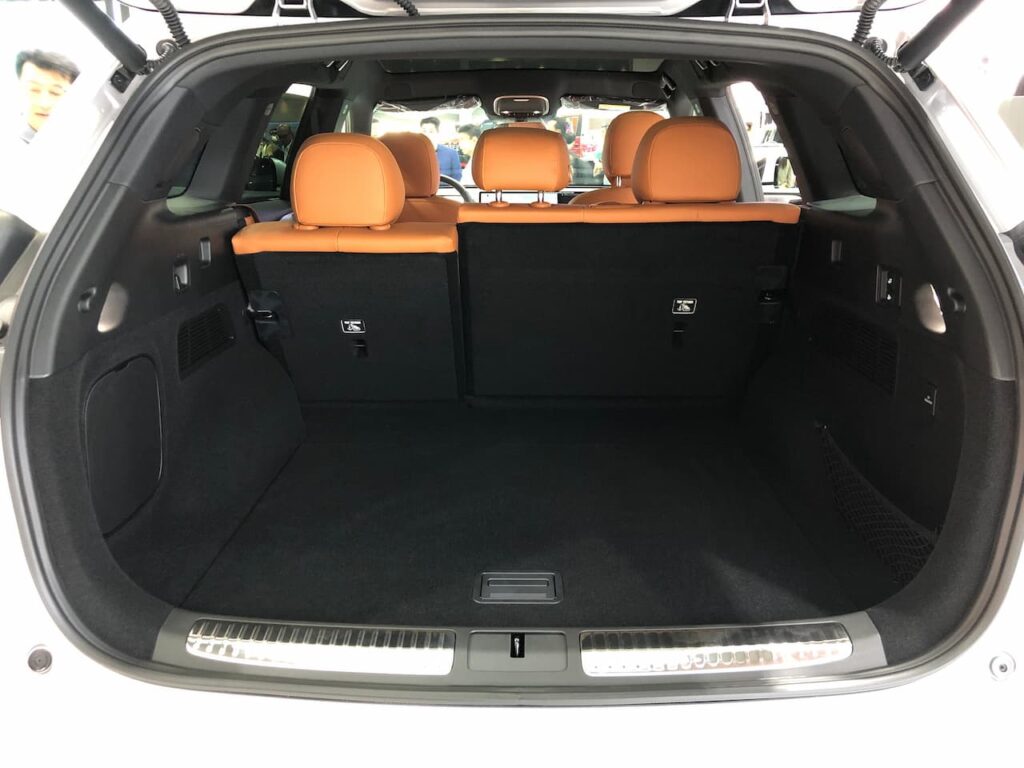
Charging
Charging from 5 to 100% SoC at an AC charging station takes at least 9 hours (RWD Standard Range)/at least 11 hours (RWD Long Range & AWD Performance). Charging from 10 to 80% SoC at a DC charging station takes 20 minutes. A 230V power outlet for V2L functions is standard, and It allows the supply of power up to 3.3 kW.
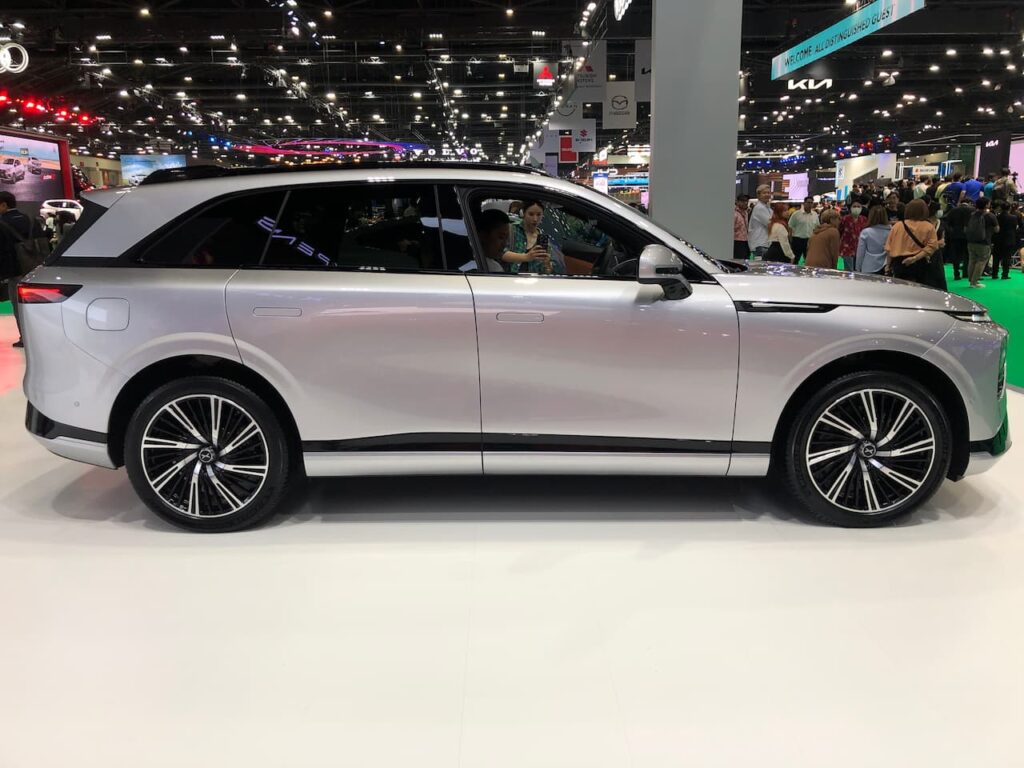
The G9 boasts Xpeng Motors’ new-generation XPower 3.0 powertrain system with China’s first 800-volt mass-production SiC platform. Customers can charge its battery pack at up to 11 kW with alternating current and up to 260 kW (RWD Standard Range)/300 kW (RWD Long Range & AWD Performance) with direct current.
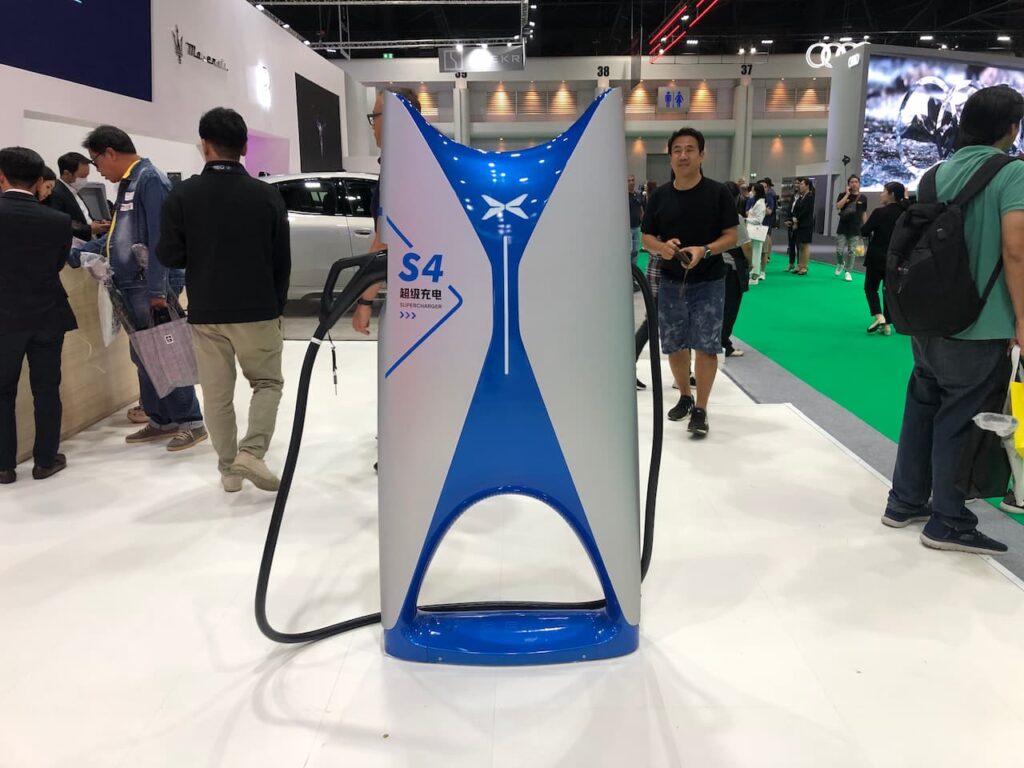
Faster charging in China
In China, the G9 can be charged even faster. However, unlike what many publications are reporting, Xpeng Motors doesn’t state 480 kW as the G9’s peak charging input. The company says that the G9 can, on purchasing a ‘4C’ option, support charging at its new 480 kW S4 supercharging (ultra-fast charging) stations. However, with an actual charging demo showing the G9 accepting direct current at 443.5 kW, it seems that taking full benefit of these charging stations will be possible.
On specifying the 4C option, charging from 10 to 80% State of Charge (SoC) takes just 15 minutes, and just 5 minutes of charging can be enough to deliver a CLTC range of 200 km (124 miles). Five minutes may seem insignificant in an absolute sense, but in the world of charging technology, it is a big leap.
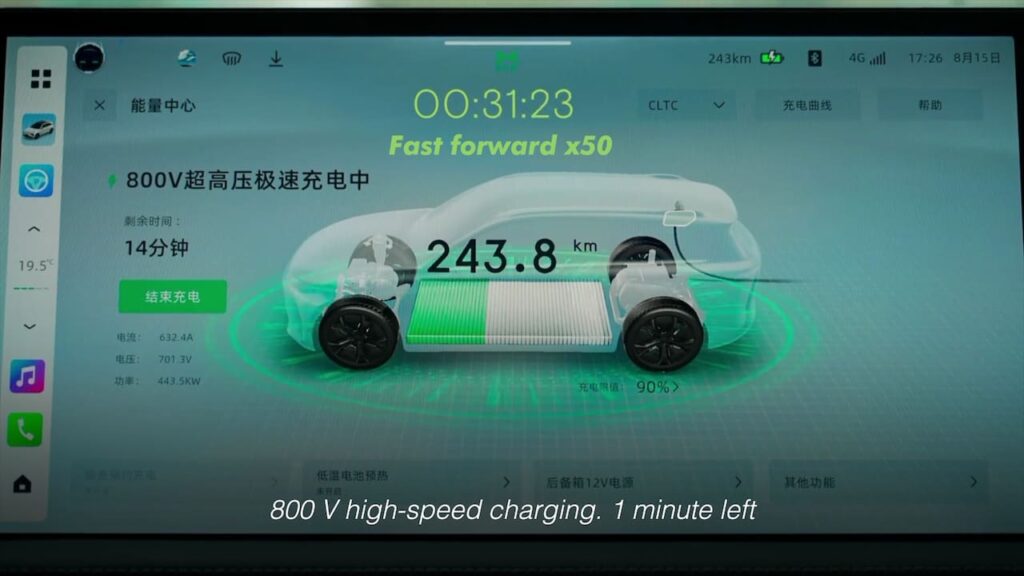
| Aspect | Xpeng G9 RWD Standard Range | Xpeng G9 RWD Long Range | Xpeng G9 AWD Performance |
| Length | 4,891 mm (192.6 in.) | 4,891 mm (192.6 in.) | 4,891 mm (192.6 in.) |
| Width | 1,937 mm (76.3 in.) | 1,937 mm (76.3 in.) | 1,937 mm (76.3 in.) |
| Height | 1,680 mm (66.1 in.) | 1,680 mm (66.1 in.) | 1,670 mm (65.7 in.) |
| Wheelbase | 2,998 mm (118.0 in.) | 2,998 mm (118.0 in.) | 2,998 mm (118.0 in.) |
| Cargo Space (rear seats up) | 660 liters (23.3 cu. ft.) | 660 liters (23.3 cu. ft.) | 660 liters (23.3 cu. ft.) |
| Cargo Space (rear seats folded) | 1,576 liters (55.7 cu. ft.) | 1,576 liters (55.7 cu. ft.) | 1,576 liters (55.7 cu. ft.) |
| Front Trunk Space | 71 liters (2.5 cu. ft.) | 71 liters (2.5 cu. ft.) | 71 liters (2.5 cu. ft.) |
| Tire Size | 245/45R19 | 245/45R19 | 255/45R21 |
| Rear Motor Power | 230 kW (308 hp) | 230 kW (308 hp) | 230 kW (308 hp) |
| Rear Motor Torque | 430 Nm (317 lb.-ft.) | 430 Nm (317 lb.-ft.) | 430 Nm (317 lb.-ft.) |
| Front Motor Power | NA | NA | 175 kW (235 hp) |
| Front Motor Torque | NA | NA | 287 Nm (212 lb.-ft.) |
| System Power | 230 kW (308 hp) | 230 kW (308 hp) | 405 kW (543 hp) |
| System Torque | 430 Nm (317 lb.-ft.) | 430 Nm (317 lb.-ft.) | 717 Nm (529 lb.-ft.) |
| 0-100 km/h (0-62 mph) Acceleration Time | 6.4 seconds | 6.4 seconds | 3.9 seconds |
| Top Speed | 200 km/h (124 mph) | 200 km/h (124 mph) | 200 km/h (124 mph) |
| Battery Pack (Net) | 75.8 kWh LFP | 93.1 kWh NCM | 93.1 kWh NCM |
| AC Charging Power | 11 kW | 11 kW | 11 kW |
| AC Charging Time (5–100% SoC) | ≥9 hours | ≥11 hours | ≥11 hours |
| DC Charging Power | 260 kW | 300 kW | 300 kW |
| DC Charging Time (10–80% SoC) | 20 minutes | 20 minutes | 20 minutes |
| Energy Consumption (WLTP) | 19.4 kWh/100 km | 19.4 kWh/100 km | 21.3 kWh/100 km |
| Range (WLTP) | 460 km (286 miles) | 570 km (354 miles) | 520 km (323 miles) |
| V2L | Yes, at 3.3 kW | Yes, at 3.3 kW | Yes, at 3.3 kW |
Meets international standards
Xpeng Motors has kept the requirements of international safety standards in mind while developing the G9. The new electric SUV complies with the C-NCAP and E-NCAP 5-star safety design standards and the stringent EU WVTA vehicle certification standards. The car has received a five-star 2023 safety rating from Euro NCAP.
Xpeng G9 is the first model of Xiaopeng Motors that was launched for domestic and international markets at the beginning of its development. It also shows the determination of Xiaopeng Motors to move towards internationalization.
Xia Heng, Co-founder and President, Xpeng Motors (Xpeng G9 world premiere in November 2021)
Using eco-friendly materials in vehicles is a good step, but a growing concern is also what happens to the car at the end of its life. Xpeng Motors says that the G9 meets the EU 3R certification requirements. It has a reusability rate of over 85% and a recyclability rate of over 95%. It should be possible to reuse most of the vehicle in this case.
Price
The Xpeng G9’s prices in Germany range from EUR 57,600 to EUR 69,600 (USD 61,309 to USD 74,081).
TopElectricSUV says
Xpeng Motors’ most advanced EV to date has the potential to expand the startup company’s popularity in China and globally. From its futuristic design to high-end electronics, the world’s best charging technology, high-performance powertrain, anxiety-free range, semi-autonomous driving, and more, the new flagship SUV sure packs a punch. For European customers, the G9 is a value-for-money premium SUV. Despite the car’s impressive credentials on paper, the long-term ownership experience will be the real litmus test.
